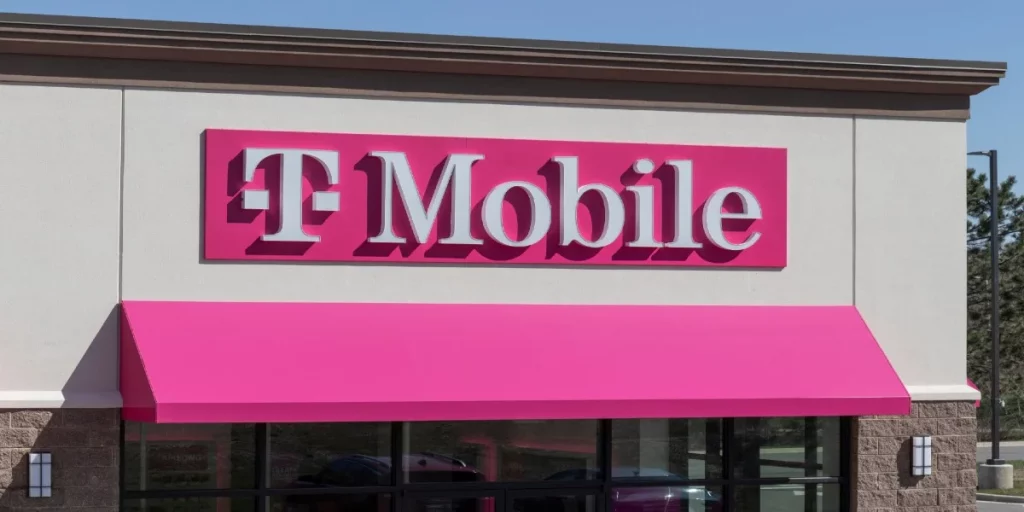T-Mobile EDGE is an acronym that stands for Enhanced Data for Global Evolution. The “2G network,” or the second generation of wireless data transport modules. EDGE is one of the standards for 2G products, along with HSCSD (High-Speed Circuit Switched Data) and iDEN/HSPD (High-Speed Packet Data) from 3GPP. EDGE operates in the 1800MHz, 900MHz, and 1.8GHz bands.
In order to support the GSM article 25 standard for EDGE handsets, T-Mobile began selling the PPC-6700 and PCS-6600 from Ericsson. These phones are EDGE handsets, and in June 2001, T-Mobile announced a national rollout of EDGE in the United States. As of February 2006, T-Mobile claims that approximately 200 million people live in areas covered by its EDGE network.
T-Mobile released a statement on 5/6/08 saying that they do not plan to upgrade their edge network to 3G HSPA+ as they plan to push 4G with WiMAX technology. T-Mobile has said that upgrading their 3G network will be a waste of money since very few customers use their data features and those that do need faster speeds can just use the EDGE connection.
Check also: Does Home Depot Take Apple Pay?
Table of Contents
What is a T-Mobile Edge?
T-Mobile Edge network is designed specifically to work with today’s smartphones, and it is the fastest EV-DO network in the United States. The network uses a combination of carrier aggregation and S-CDMA technology to provide a theoretical maximum data speed of up to 7.2Mbps downlink and up to 3.2Mbps uplink. The 3G coverage area is measured in square miles, which varies depending on where you live, but it’s considerably larger than some other GSM or EDGE networks. T-Mobile debuted its first nationwide upgrade to serve an additional 40 million customers.
How does it work?
T-Mobile’s EDGE network uses carrier aggregation to speed up data on the network. Carrier aggregation is a method of combining multiple frequencies into a single band to transmit data. Basically, carriers combine their spectrum holdings with the spectrum owned by other carriers, resulting in higher speeds for subscribers to access data.
T-Mobile’s EDGE 3G network shares its frequency with CDMA2000 1x technology. The main difference between CDMA2000 1x and 3G is that the former uses a smaller bandwidth than the latter, and therefore T-Mobile has had to make some changes in order to handle EDGE data while still charging 10¢ per megabyte of data on CDMA2000 1x devices.
How Can I Use EDGE When I Have a 4G LTE Plan?
If you have a 3G device (which is most phones with “3G” in the name) as your main phone, and you’re on T-Mobile where EDGE is available, then you’re already using EDGE. It’s true that T-Mobile said in 2008 that they plan to pull the plug on their 3G Edge network and move all subscribers to HSPA+, but so far they haven’t done this. So even if you go over the 25GB of data that a 2-year agreement would cover, it won’t really matter except for those who use lots of data features.
However, if you have an HSPA+ or LTE device where T-Mobile service is available and you’re in an area where 3G EDGE is also available, you’ll have the best of both worlds – HSPA+ for data and EDGE for voice. Since T-Mobile isn’t upgrading its 3G network to 4G HSPA+, the only way it will work is if you buy a device that supports 4G LTE. For instance, if your phone supports “LTE” in its name (like the Samsung Galaxy S III), then it will work with both T-Mobile’s 4G HSPA+ and its EDGE network.
What does EDGE mean on mobile data?
In the simplest terms, EDGE is T-Mobile’s second-generation data network. It’s faster than GPRS but not as fast as HSPA or LTE (at least for now). EDGE can deliver data speeds up to about 7.2Mbps down and 3.2Mbps up. One of the reasons that EDGE doesn’t perform quite as well as other networks is that it can only use a single radio instead of two.
But how fast is the network going to be? It depends on where you live and where you are when you’re using your phone. If you live in an area where the signal isn’t really strong and you’re using a memory-hungry app or game, you’ll probably be able to get about 3-4 Mbps of data. If you’re outside in rural areas, you won’t be able to use the higher speeds at all.
What are the coverage maps for EDGE?
You can see a map of the T-Mobile signal here. You’ll have to zoom in on your location to see if it’s supported. Viewing a 3G coverage map is probably not going to do you much good when you’re trying to find out about 4G LTE and 5G Evolution coverage. However, those don’t really apply to EDGE. The biggest thing that you can do is read the fine print and check your phone against the requirements before buying anything else.
What is EDGE used for?
If you’re using an iPhone, there are a few things that EDGE does better than GPRS:
EDGE comes with many more features for the iPhone than GPRS does (like WiFi calling). In order to make their voice networks more robust, T-Mobile has included 8MB of RAM fast flash memory in all their phones. This keeps the phone from running out of space during a call without having to delete messages. It also allows the phone to hold simultaneous calls more efficiently. There is a small performance improvement with EDGE versus GPRS, but it’s not enough to make a real-world difference. For example, it’s unlikely that you’ll be watching videos or playing games on EDGE instead of on Wi-Fi.
Final Verdict
Both of these terms mean exactly the same thing in this context. They both refer to T-Mobile’s second-generation data network. They do not mean 3G or HSPA+. It’s a little confusing, but all of this really does boil down to whether you have speedier EDGE coverage in your area or not. The only real difference between an EDGE device and a 3G device is that you can use 2x carrier aggregation on an EDGE phone, and the phone is usually slightly smaller. Of course, if you’re an iPhone user, you can also opt for 2x carrier aggregation on WiFi if you want.

Virat Raj is a Digital Marketing Practitioner & International Keynote Speaker currently living a digital nomad lifestyle. During his more than 10 years-long expertise in digital marketing, Virat Raj has been a marketing consultant, trainer, speaker, and author of “Learn Everyday yourself: In Pursuit of Learning” which has sold over 10,000 copies, worldwide.

